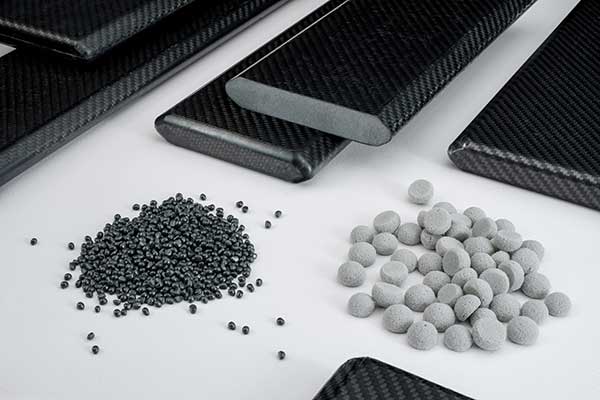Advanced materials that boast superior strength at lighter weights will push the UAV industry to new heights.
By Jamey Embree, Diversification Commercial Director at L&L Products
Higher payload capacity. Extended range. Durability and ease of manufacturing. Manufacturers of Unmanned Aerial Vehicles (UAVs or commonly referred to as drones) join our customers in the traditional aerospace, automotive, commercial vehicle, and rail industries who seek to achieve lighter, stronger, quieter, and more efficient vehicles while simplifying production at the same time.
The world of UAVs has been reaching new heights when it comes to innovation. The market value for the UAV industry is expected to experience tremendous growth through 2032. For these manufacturers who compete to develop strong, lightweight components like propellers, stabilizers, and airframes, we believe that the right material selection is the key to performance optimization, durability, and production efficiency.
While traditional metals, plastics, and elastomers have been popular material choices in the past, we find that certain composite materials can offer superior strength-to-weight ratio and performance benefits while providing ample structural reinforcement.
As UAV manufacturers seek to implement groundbreaking lightweighting and efficiency solutions, here’s how they can put advanced composites to work.
Every ounce the drone weighs is potentially deducted from the payload capacity and negatively impacts the range of the vehicle. Due to the lightweight nature of composite materials, they help reduce energy consumption and can extend a vehicle’s battery range by trimming excess weight. In terms of range and performance, composite materials offer the best of both worlds with a higher strength-to-weight ratio compared to metal parts. Fortunately, the versatility of composite materials translates to a wide variety of applications, including propeller blades, body panels, and airframe members.
For example, pultruded profiles could be integrated into the structure for strength, stiffness, and rigidity to a lightweight structure that can be 75% lighter than steel or 30% lighter than aluminum.
Durability at the material level is also a major benefit of composites. They are known for their resistance to corrosion compared to traditional metal materials and fasteners, helping to extend the working life of the product.
This provides a desirable set of attributes for UAVs. By providing superior strength at lighter weights, composites ultimately help extend battery range, increase a delivery drone’s payload capacity and improve overall performance.

Manufacturing traditional metal parts often requires the machining of expensive alloys, and assembly can involve welding and the integration of multiple components, brackets, and fasteners. These processes add production costs and time in addition to the extra weight.
At the core, composite solutions can fundamentally simplify your end-to-end manufacturing processes and reduce the amount of waste in your manufacturing workflow. In many cases, composite solutions can replace a multi-component structure with a single molded part and integrate molded-in fasteners or brackets. This helps make manufacturing more streamlined and intuitive by requiring fewer installation steps, which means workers (or automated processes) spend less time on assembly operations.
For example, our heat-activated foam-core composites are particularly effective in reducing waste throughout your production workflow, as they create net-shape parts without the need to cut away excess material. The foam core material is available in sheets, pellets, or as preformed mandrels, which eliminate the need for cumbersome manual mixing. They can streamline logistics, mitigate points of failure in your supply and assembly chains, decrease cycle times and reduce the number of parts your team needs to monitor for quality control. In other words, composites simplify production in a multitude of ways.
As the world of UAVs evolves quickly, it’s more important than ever to correctly integrate the materials and processes that have already driven lightweighting innovation in aerospace, automotive, and other mobility industries. If you’re wondering where to begin, the right partner with the right experience will make all the difference.
Look for materials science and advanced engineering experts who go above and beyond the role of a traditional vendor or supplier. Rather than selling you a stock solution, they’ll work hand-in-hand with your team to identify the best materials for your applications, optimize them for your production requirements, streamline your production processes, and uncover cost efficiencies you may not have considered.
With the right partner, you’ll be able to achieve a range of benefits beyond lightweighting. You can make your entire production workflow simpler, faster, cleaner, and more cost-effective and often with fewer hazards than competing techniques.

About the Author:
Jamey Embree is the Director of Business Development for L&L Products, where he plays a pivotal role in driving strategic growth and expanding the company’s offerings and market reach. Embree joined L&L in early April 2025 after an impactful 14-year tenure at BASF
In this episode, I sat down with Beejan Giga, Director | Partner and Caleb Emerson, Senior Results Manager at Carpedia International. We discussed the insights behind their recent Industry Today article, “Thinking Three Moves Ahead” and together we explored how manufacturers can plan more strategically, align with their suppliers, and build the operational discipline needed to support intentional, sustainable growth. It was a conversation packed with practical perspectives on navigating a fast-changing industry landscape.